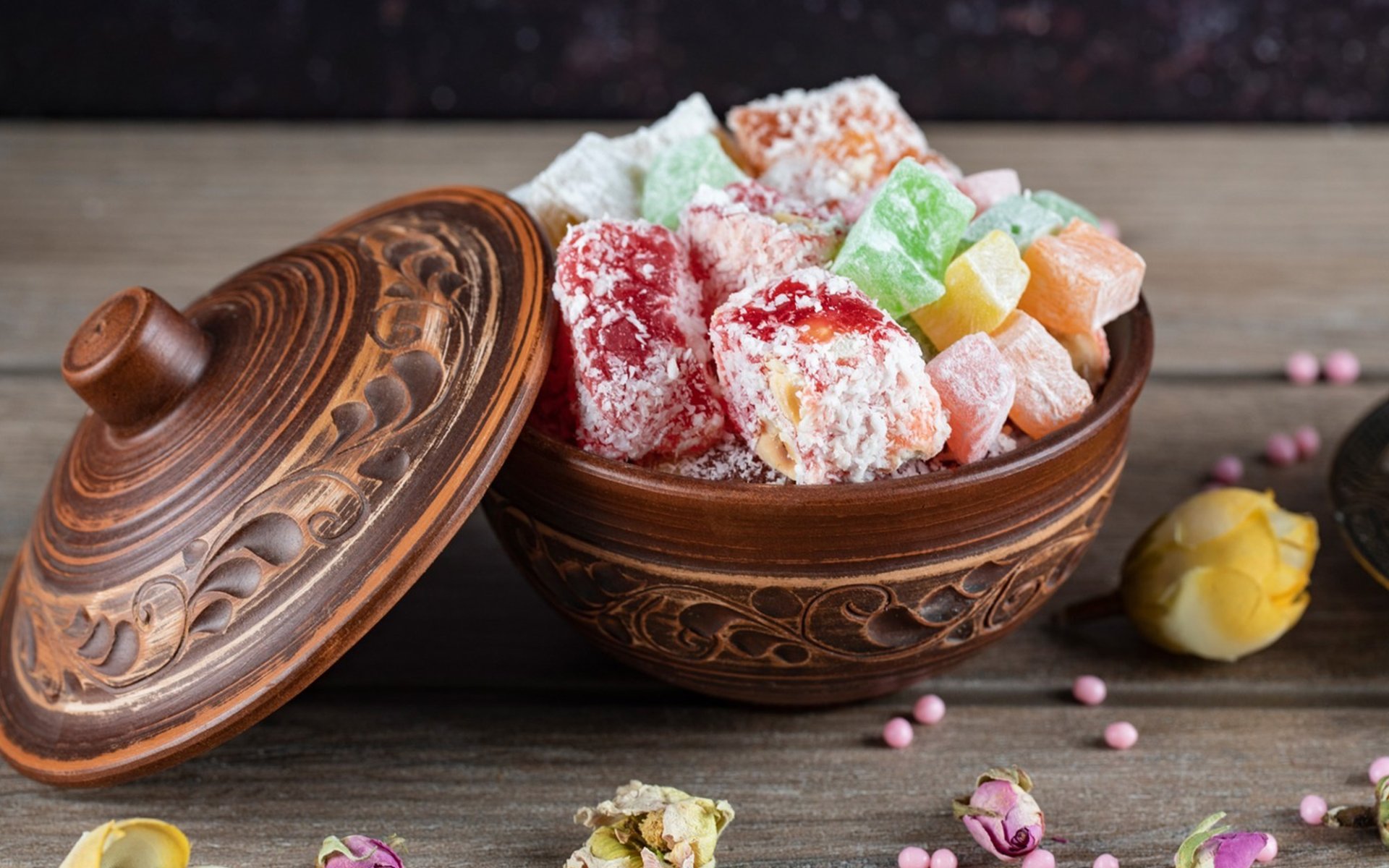Turkish Delight

The land of two continents, Turkey, is not only famous for its beautiful tourist attractions and scenic landscapes but also for its many renowned culinary delights known worldwide. One such delicacy is "Turkish Delight," a chewy, soft sweet often enjoyed with tea and coffee.
Turkish Delight, or "Lokum" as it's known to Turks, is a colorful, cube-shaped sweet with a wonderfully fragrant taste. It's made from starch, powdered sugar, cream of tartar, and coconut. Turks typically pair it with tea and coffee, as the intense sweetness of Turkish Delight complements the strong flavor of coffee perfectly.
Origins in the Ottoman Court: A Confection of Favor
The origins of Turkish Delight date back to the 17th century. It is said that this confection was created by Haci Bekir, a pastry chef in the Ottoman court of Turkey. At that time, he received an order from Sultan Abdul Hamid I to create a unique sweet to please his many wives.
Upon receiving the command, Haci Bekir experimented with making a sweet by mixing syrup with various nuts and stirring them with Mastic, an Arabic tree resin. After numerous attempts, he finally perfected a recipe for a pink-hued confection called Rahat Al-halkum in Arabic. It is believed that this recipe was an adaptation of an ancient sweet popular in the Middle East since the 14th century.
To Success and an Ancient Shop in Istanbul
After achieving a successful recipe, he presented this sweet to the Sultan and his wives. His confection became immensely popular within the palace. Over time, Haci Bekir decided to open his own shop in Istanbul in 1777, named Ali Muhiddin Hacı Bekir. This shop remains open today, with his descendants continuing the legacy for over 246 years, a true living legend.
Transcontinental Journey: From Lokum to Turkish Delight
In the 19th century, an English traveler visited Turkey and had the opportunity to taste this sweet for the first time. He was so enchanted that he named it Turkish Delight in English. He then brought the recipe back to England. Subsequently, Turkish Delight began to be developed with an even wider variety of flavors to cater to different tastes.
Since its introduction to the Western world in the 19th century, Turkish Delight gained immense popularity in many European countries. Europeans often enjoy it during Christmas and carefully wrap it as gifts for loved ones. However, today, Turkish Delight is a sweet that can be enjoyed throughout the year, not just during holidays.
Evolution of Flavors and Forms
Historically, Turkish Delight primarily used starch and sugar, with flavors added through ingredients like orange, mint, cinnamon, and various nuts. However, modern recipes have refined the texture to be even chewier and softer, and introduced innovative flavors such as rosewater, hazelnut, walnut, pistachio, pomegranate, almond, strawberry, cherry, and lemon, among others. This expansion offers consumers a much broader selection.
The process of making Turkish Delight involves pouring all the cooked ingredients into large trays and letting them set for approximately 5-6 hours. Once set, they are cut into small cubes and coated with powdered sugar, cream of tartar, and dried shredded coconut to prevent sticking and add texture.
Influence in Popular Culture
Today, the influence of Turkish Delight has spread across many continents worldwide. It famously appeared in the popular film The Chronicles of Narnia: The Lion, the Witch and the Wardrobe, in a scene where the White Witch tempts Edmund Pevensie to reveal secrets. The boy was so captivated by the alluring taste of Turkish Delight that he divulged information to the witch. Following the film's release, the confection's popularity surged, especially among children who saw Edmund Pevensie enjoying it so deliciously. This enduring fascination is a testament to the enchanting appeal of this sweet from Turkey.


